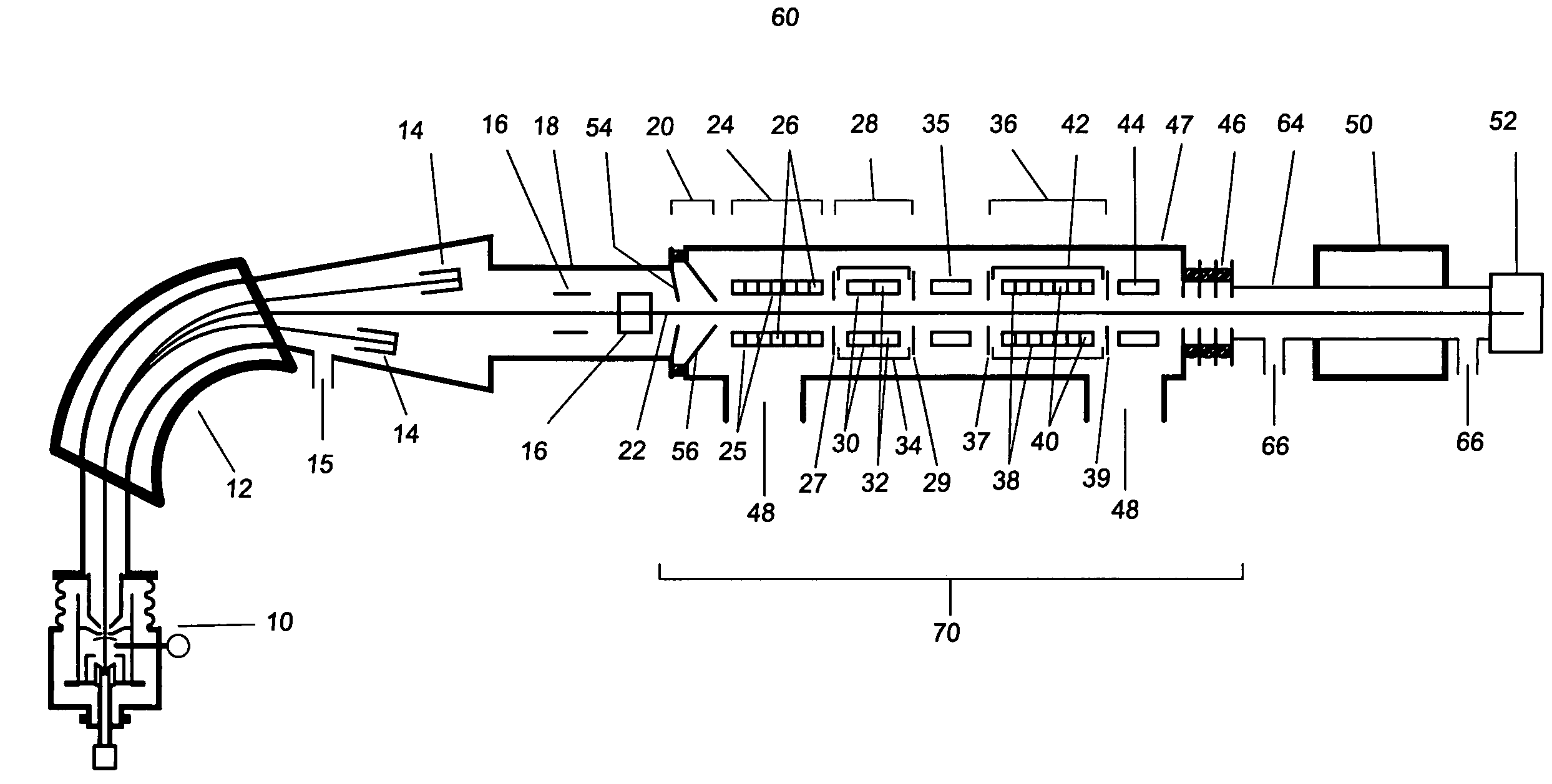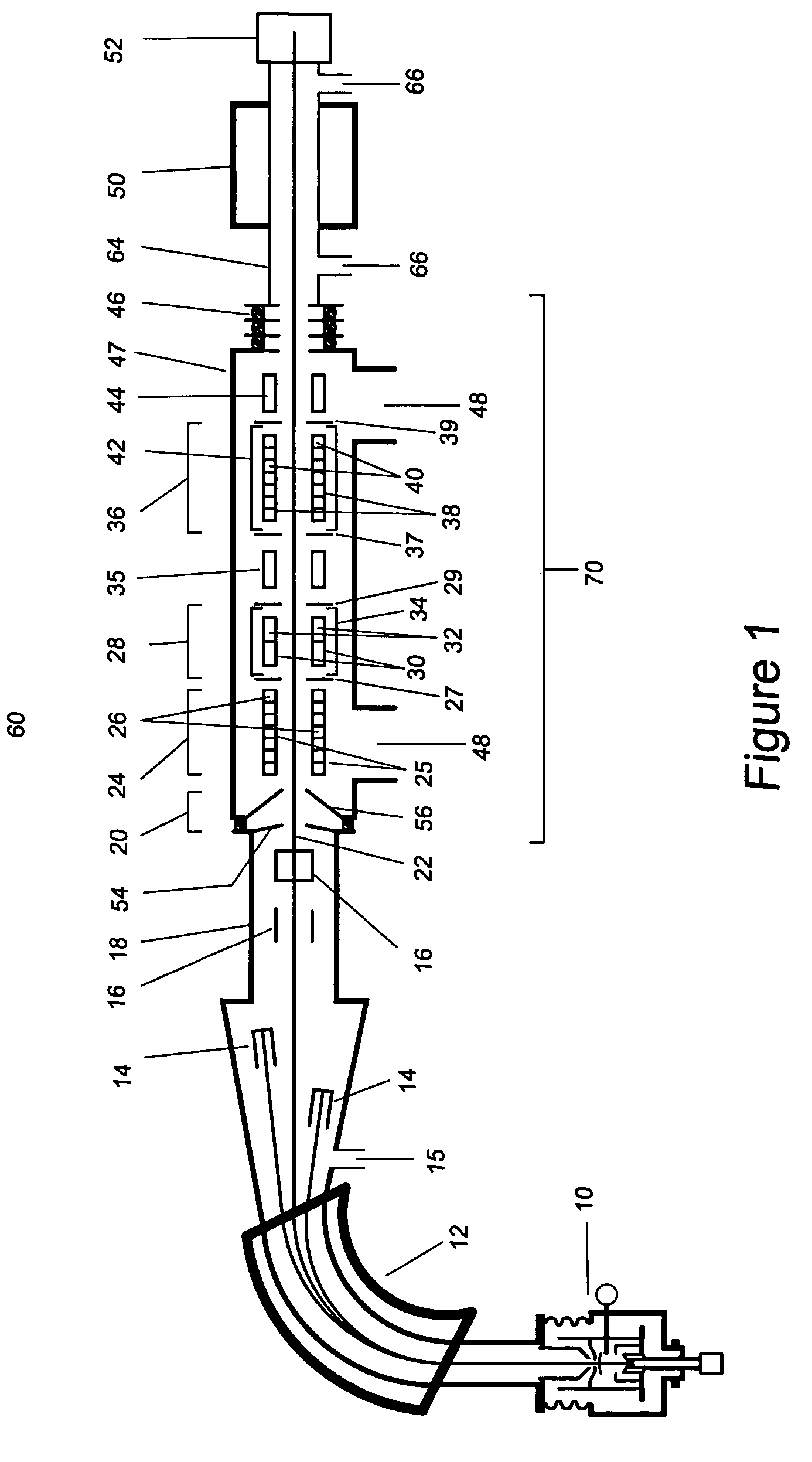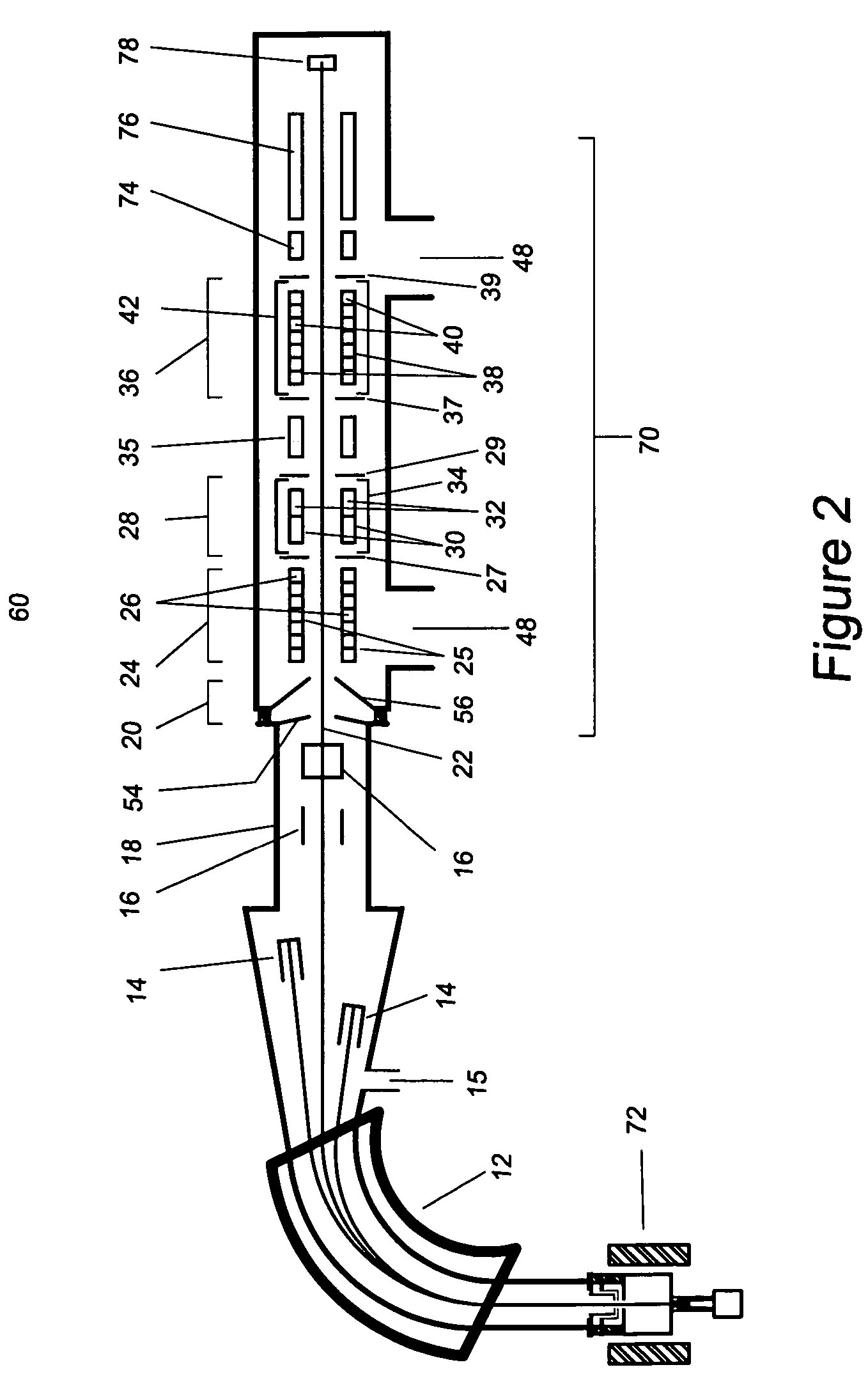Method and apparatus for separation of isobaric interferences
a technology of isobaric interference and separation method, which is applied in the direction of isotope separation, particle separator tubes, mass spectometers, etc., can solve the problems of interference, extremely small mass differences between isobars, interference caused by isobars, etc., and achieve the effect of preventing reaction and reducing the size and cost of ams installations
- Summary
- Abstract
- Description
- Claims
- Application Information
AI Technical Summary
Benefits of technology
Problems solved by technology
Method used
Image
Examples
Embodiment Construction
[0027]As used herein the phrase “analyte ions” means ions of interest to be analyzed using the method and apparatus of the present invention.
[0028]As used herein the phrase “isobar ions” or “isobaric interferences” refers to atoms or molecules which have very nearly (substantially) the same mass as the atom or molecule being analyzed (the analyte).
[0029]As used herein the phrase “ion beam kinetic energy” means the approximate average value of the kinetic energy of an ensemble of ions within the ion beam containing the analyte ions being analyzed.
[0030]The present disclosure describes a method and apparatus to substantially reduce the intensity of the isobaric interference while providing high transmission of the desired analyte ion. Application of the technique to mass spectrometry increases the sensitivity for the detection of the analyte ions. Its application to accelerator mass spectrometry also allows substantial reductions in the necessary terminal voltage of AMS spectrometers....
PUM
 Login to View More
Login to View More Abstract
Description
Claims
Application Information
 Login to View More
Login to View More - R&D
- Intellectual Property
- Life Sciences
- Materials
- Tech Scout
- Unparalleled Data Quality
- Higher Quality Content
- 60% Fewer Hallucinations
Browse by: Latest US Patents, China's latest patents, Technical Efficacy Thesaurus, Application Domain, Technology Topic, Popular Technical Reports.
© 2025 PatSnap. All rights reserved.Legal|Privacy policy|Modern Slavery Act Transparency Statement|Sitemap|About US| Contact US: help@patsnap.com



